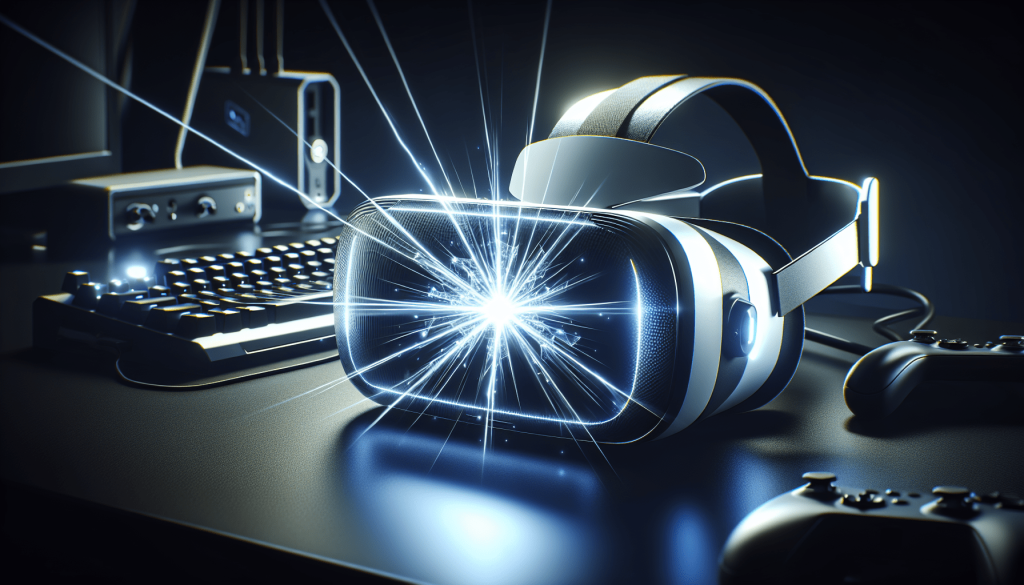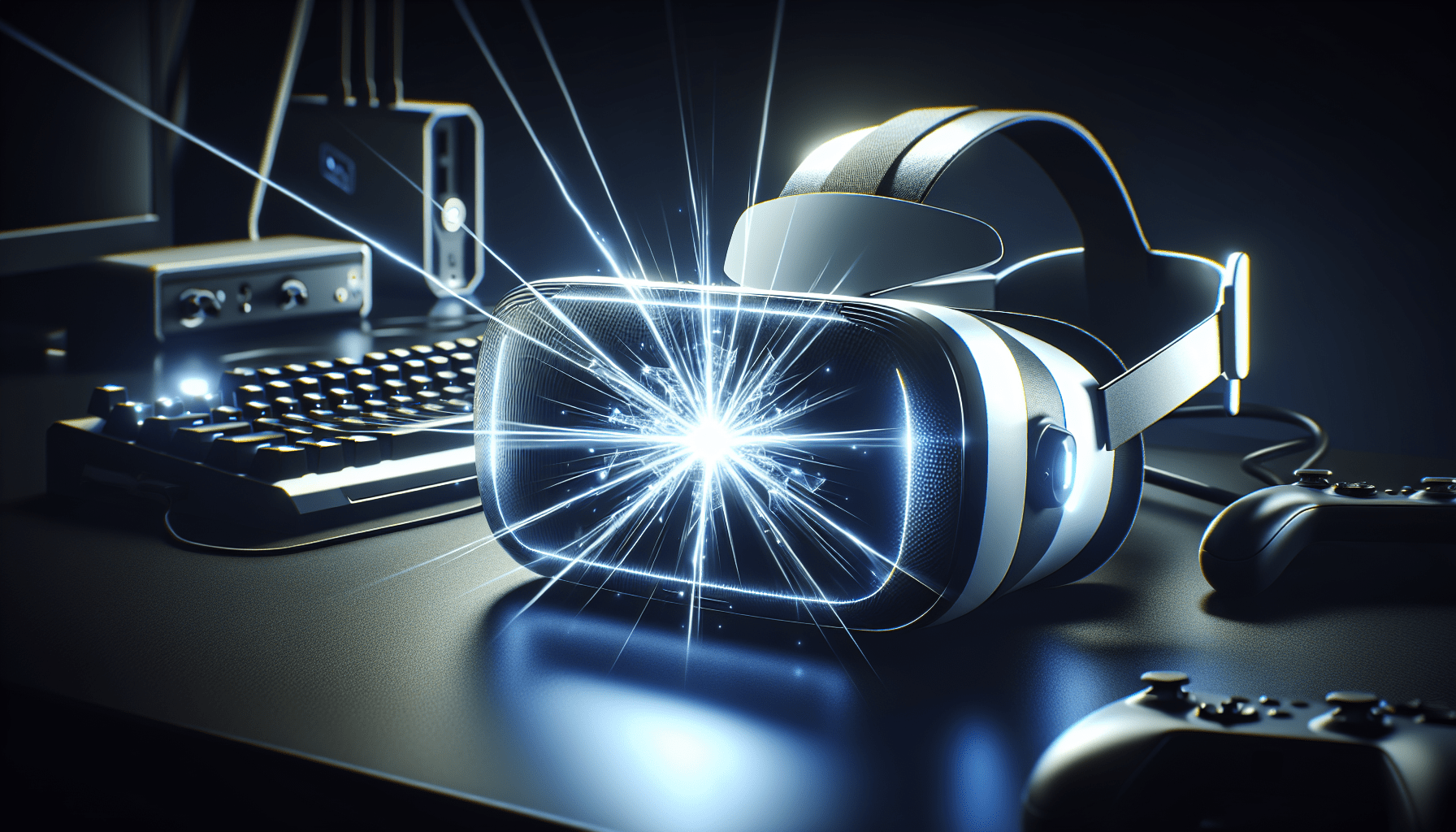In the world of virtual reality gaming, encountering errors and technical glitches can be frustrating and disrupt your immersive experience. However, with the right troubleshooting tips, you can quickly resolve these common VR gaming errors and get back to enjoying your virtual adventures. This article will provide you with valuable insight and expert advice on how to overcome these challenges, ensuring a seamless and enjoyable gaming experience in the virtual realm.

Headset Connection Issues
Check the headset cables
One of the most common issues with VR headsets is a faulty cable connection. Before troubleshooting any further, it is essential to check if all the headset cables are firmly plugged in. Make sure to inspect the connections at both the headset and the computer or VR console. Even a slightly loose cable can result in a poor connection, leading to various problems like display flickering, tracking issues, or audio glitches. If you find any loose cables, ensure they are securely plugged in.
Restart the headset
If the cables are properly connected and you are still experiencing connection issues, a simple restart of the headset might help resolve the problem. Many VR headsets have an option in the settings menu to restart the device. By doing so, you can give the headset a fresh start, eliminating any temporary software glitches that may be causing the connection problems.
Update the headset firmware
Outdated firmware can sometimes result in connection issues and other performance problems. It is crucial to keep your VR headset’s firmware up to date to ensure optimal functionality. Check the manufacturer’s website or the headset’s software application for any available firmware updates. Follow the instructions provided to install the latest firmware and improve the headset’s compatibility and stability.
Try a different USB port
If you are still experiencing connection problems, it might be worth trying a different USB port on your computer or VR console. Sometimes, certain USB ports may not provide sufficient power or have compatibility issues, which can affect the headset’s connection. Switching to a different USB port can help resolve such issues. Additionally, make sure to use high-quality USB cables for your VR headset to minimize the risk of connection problems.
Graphics Card Compatibility Problems
Check the minimum system requirements
VR gaming requires a powerful graphics card to render high-resolution visuals and deliver a smooth experience. If you encounter compatibility issues with your graphics card, the first step is to ensure that your system meets the minimum system requirements specified by the VR game or application. Check the game’s official website or documentation for the recommended hardware specifications. If your graphics card falls short of the minimum requirements, you may need to upgrade to a more capable one.
Update graphics card drivers
Outdated or incompatible graphics card drivers can cause numerous issues, including graphical glitches, crashes, and compatibility problems. It is essential to keep your graphics card drivers up to date to ensure optimal performance. Visit the manufacturer’s website for your graphics card and look for the latest available drivers. Download and install them following the provided instructions. This can often resolve compatibility problems and improve the overall performance of your VR gaming experience.
Try running the game on lower graphics settings
If you are experiencing graphics card compatibility issues, you can try running the VR game on lower graphics settings. Lowering the graphical fidelity can reduce the strain on your graphics card and help improve compatibility. Within the game’s settings, look for options such as “Graphics Quality” or “Visual Settings” and lower them to a level that your graphics card can handle. While this may affect the visual quality, it can allow you to play the game without encountering compatibility problems.
Consider upgrading your graphics card
If you have exhausted all other options and are still unable to resolve compatibility problems with your graphics card, it may be time to consider upgrading to a more powerful one. VR gaming demands a significant amount of graphics processing power, and having an outdated or underpowered graphics card can severely impact your gaming experience. Research and invest in a graphics card that meets or exceeds the recommended system requirements for VR gaming. This will ensure smoother gameplay and eliminate compatibility issues.
Tracking Problems
Ensure proper lighting conditions
Accurate tracking is crucial for a seamless and immersive VR experience. Poor lighting conditions can interfere with the tracking sensors and result in inaccuracies or loss of tracking. Ensure that the play area is well-lit but without any bright, direct light sources that may interfere with the sensors. Avoid excessive backlighting or shadows. Adjustable or dimmable lighting in the room can be beneficial, allowing you to optimize the lighting conditions for the best tracking performance.
Clear any obstacles blocking the sensors
Tracking sensors need a clear line of sight to track the VR headset and controllers accurately. Make sure there are no physical obstacles or objects obstructing the sensors’ view. Remove any unnecessary objects, furniture, or decorations that may interrupt the tracking. Pay special attention to reflective surfaces like mirrors or glass, as they can cause tracking errors. Creating an unobstructed and clutter-free environment will greatly enhance the tracking accuracy and reduce potential issues.
Check for reflective surfaces
Reflective surfaces can cause tracking problems by reflecting or interfering with the sensors’ infrared signals. Check the play area for any mirrors, windows, or shiny surfaces that may be causing issues. If you notice any reflective surfaces, try covering them or repositioning the VR equipment to minimize their impact. Additionally, ensure that the VR headset or controllers do not have any reflective or shiny accessories attached, as they can also affect tracking performance.
Reposition the base stations
Base stations are an integral part of some VR systems, providing the necessary tracking signals to the headset and controllers. If you are experiencing tracking problems, try repositioning the base stations for optimal coverage. Experiment with different placements and angles, ensuring they are securely mounted or placed on stable surfaces. Consult the VR system’s documentation or manufacturer’s guidelines for the recommended positioning of the base stations. This adjustment can often improve tracking accuracy and minimize tracking errors.
Controller Connectivity Troubles
Make sure the controllers are charged
Controllers that are low on battery can experience connectivity issues. Before troubleshooting further, ensure that your VR controllers are adequately charged. Refer to the controller’s user manual or the manufacturer’s instructions for charging methods and estimated battery life. Charge the controllers fully and verify that they are holding a charge. If the controllers still exhibit connectivity problems, move on to the next troubleshooting steps.
Restart the controllers
If the controllers are charged, but you are still having connectivity troubles, a simple restart can help. Many VR systems have an option to restart the controllers either through the system menu or by pressing specific buttons on the controllers. Restarting the controllers can clear any temporary software issues that might be causing the connectivity problems. Follow the system’s instructions to perform a controller restart and check if the connectivity improves.
Re-pair the controllers with the headset
In some cases, the controllers may lose their pairing with the VR headset, resulting in connectivity problems. To re-establish the connection, you will need to re-pair the controllers with the headset. Check the VR system’s documentation or website for instructions on how to pair the controllers. Typically, this involves holding down specific buttons on the controllers while following the on-screen instructions. By re-pairing the controllers, you can often resolve connectivity issues and regain full control.
Replace the controller batteries
If you have tried all the previous steps and are still experiencing controller connectivity problems, it might be worth replacing the batteries. Over time, batteries can lose their capacity to hold a charge effectively, leading to intermittent connectivity issues. Consult the controller’s user manual to determine the type of batteries required and replace them accordingly. Fresh batteries can often provide a more reliable connection and eliminate connectivity troubles.
